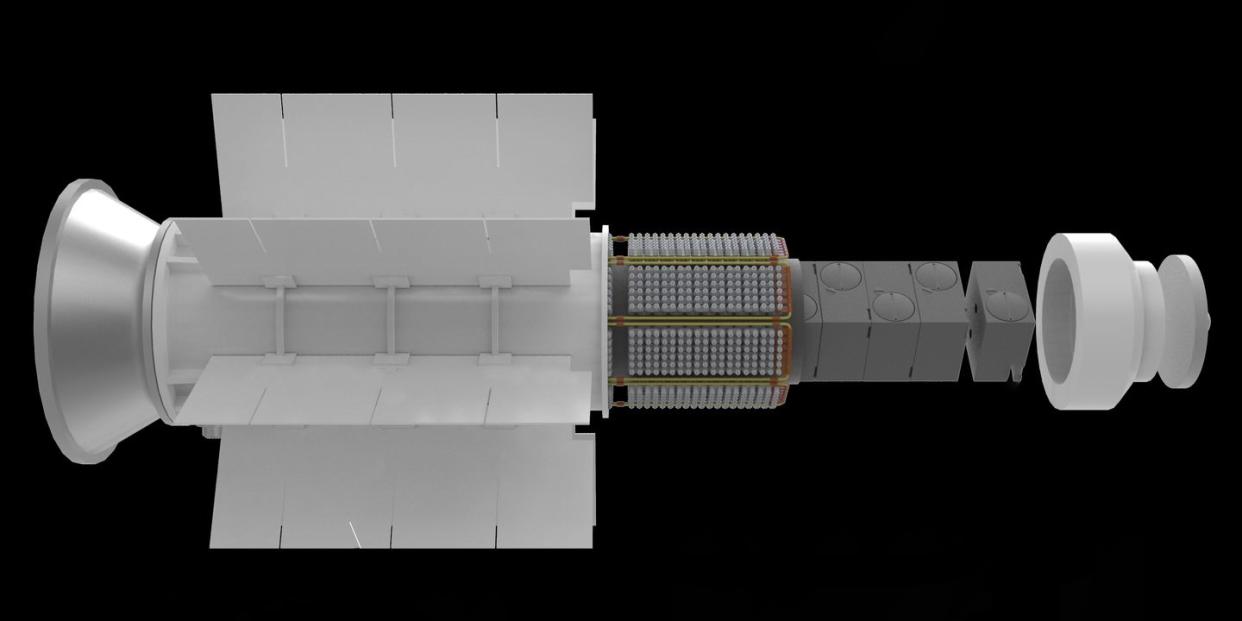The Nuclear Energy That Will Send Us to the Moon and Mars

NASA has endorsed President Trump's new space nuclear energy directive.
The directive is an official policy to develop nuclear resources for Artemis and beyond.
These immediate plans include fission reactors and nuclear batteries.
Last week, President Donald Trump made a new directive to help push NASA back to the moon using nuclear energy.
While chemical fuels are still considered best for launches, for example, and plenty of satellites and other intraspace applications are fine for solar power, the Trump administration has said the idea of stationing people on the moon requires a next-level energy system—and NASA agrees. For now, the agreement relies on well-established technology safely used all around the world and already in space.
"Space Policy Directive-6" is all about space nuclear power and propulsion (SNPP), an umbrella category that includes providing electrical and heat energy for planned installations on the moon as well as the propulsion system that will likely, eventually carry NASA to Mars. The White House explains on its fact sheet:
“Space nuclear systems power our spacecraft for missions where alternative power sources are inadequate, such as environments that are too dark for solar power or too far away to carry sufficient quantities of chemical fuels. Space nuclear systems include radioisotope power systems (RPSs) and nuclear reactors used for power, heating, and/or propulsion.”
Radioisotope power systems (RPSs) have been used safely for decades, and their design has helped to inspire today’s rising generation of nuclear micro-reactors, in fact. They’re basically closed systems where an ongoing nuclear reaction creates energy, but without any moving parts.
Unlike Earthbound nuclear power plants, which in the current generation usually use nuclear energy to heat water into power-generating steam, these “nuclear batteries” use temperature difference alone to make current.
What does this directive mean, besides explaining in detail what SNPPs are? Well, the fact that some technologies are in use today as terrestrial nuclear fission plants or satellite-powering batteries doesn’t mean they’re ready to swap into lunar rovers or build on the surface of the moon.
Further Reading: The Best Nuclear Books
The use cases are different, the environment is different, and even reliable technologies are always improving. That means by 2024, when NASA plans to land the next man and first woman on the moon, those astronauts will probably be using an entirely next generation of nuclear batteries for their different tasks.
NASA is already doing research on the best nuclear power plant to use on the moon, adapting existing fission technology (what fuels all nuclear plants on Earth for now) to the specific conditions on the moon. This is a genuine challenge: the moon has different surface materials, a different temperature range, much lower gravity, and on and on.
And whatever NASA designs must be carried to the moon in payload-friendly pieces. It’s like suddenly deciding to put a nuclear plant at the peak of Mount Everest or on the ocean floor: a totally different use case.
Further down the road, NASA’s interests include experimental nuclear reactors that are popular for Earth research, too, like fusion or molten salt. It doesn’t necessarily make sense to wait until fusion is mature before you start to examine how fusion might work on the surfaces of other planets or as the propulsion system for an intergalactic spacecraft. But for now, we have plenty of established technology to carry to the moon.
🎥Now Watch This:
You Might Also Like

